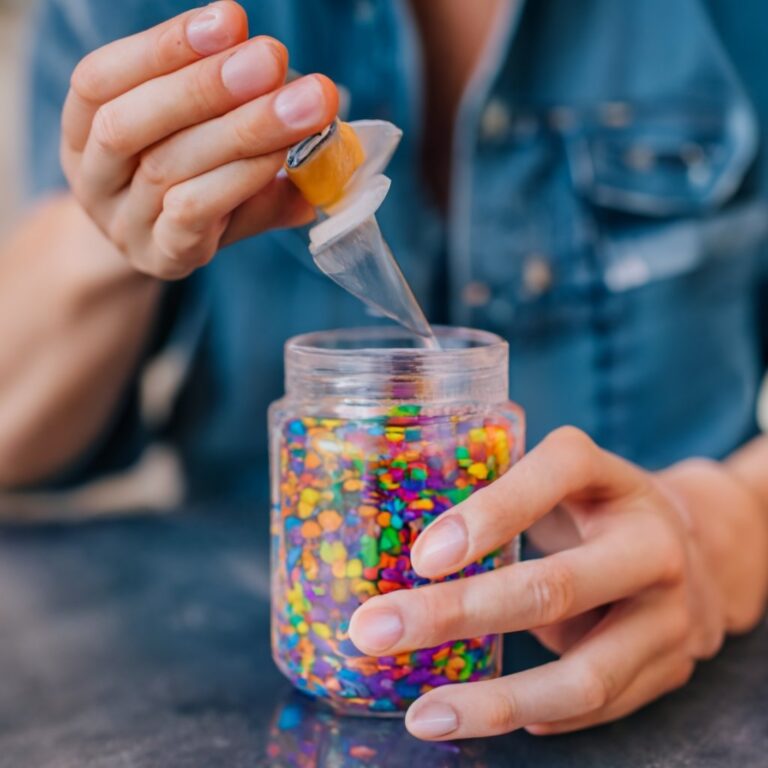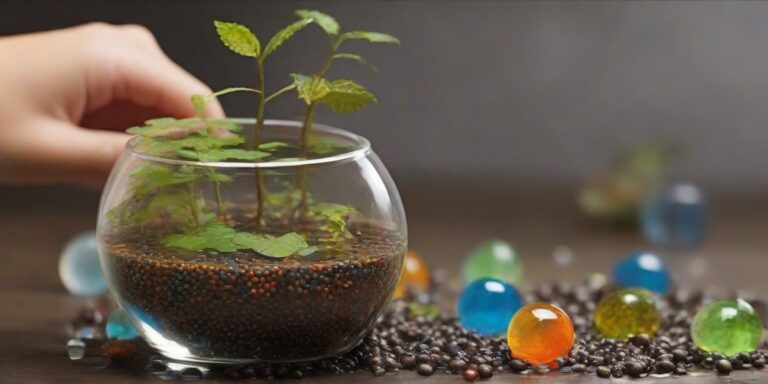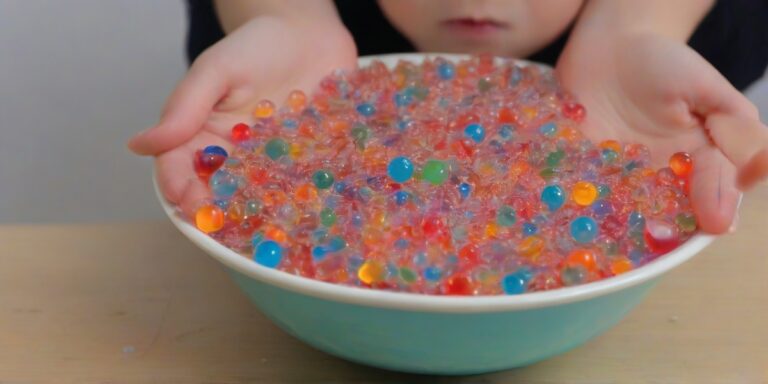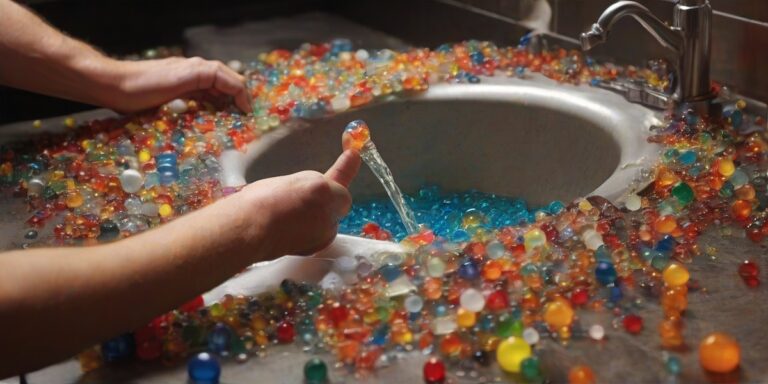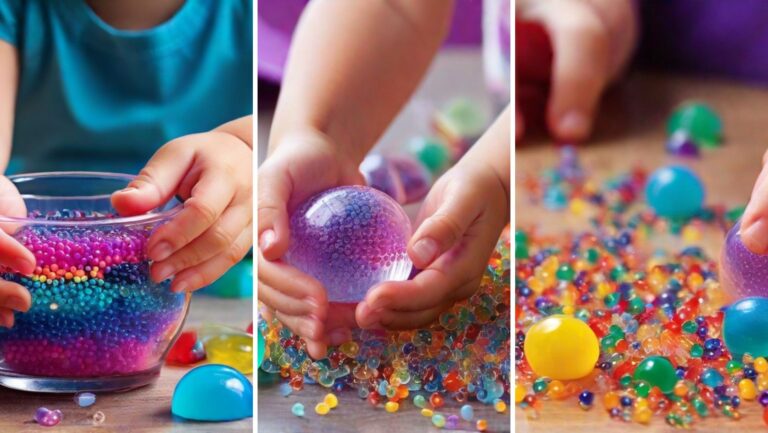Are Orbeez Toxic to the Environment? Their Shocking Environmental Impact
Over the past decade, Orbeez has infiltrated toy aisles and households as a wildly popular sensory play item for kids and adults alike. These colorful, squishy superabsorbent polymer beads seem like an irresistible way to enhance bathtub play, DIY projects, foot spas, and open-ended creative fun. Simply soak the tiny gel pellets in water, and they magically expand into soft, flexible orbs up to 100 times their original size.
With promises of being non-toxic and environmentally friendly, Orbeez exploded onto the toy scene and cemented themselves as a staple item for videos on YouTube and other social media. Their vibrant colors and mesmerizing expanding properties made them the hottest new fad. And their low cost made them readily accessible to families across the globe.
But a dark side to the Orbeez phenomenon has emerged. Serious concerns have been raised about the environmental impact of these polymer beads once they are disposed of. As awareness grows around plastic pollution in waterways and dangers of microplastics, scrutiny has turned to the chemical composition and biodegradability of Orbeez.
Despite being marketed as eco-friendly toys, the polymers that comprise Orbeez may persist in ecosystems for years or decades once discarded. Most evidence suggests they slowly break down at best and can release additional concerning microplastic particles in the process. This raises alarms about Orbeez contributing to the growing crisis of plastic contamination across the planet.
Additionally, the methods for disposing of used Orbeez are woefully inadequate. Orbeez are often simply drained down household sinks or dumped into backyard environments. Washed into watersheds, these tons of tiny plastic beads could have devastating effects on water quality, aquatic ecosystems, and wildlife. Yet public awareness of proper Orbeez disposal is minimal.
With millions of kids and adults now playing with Orbeez, are enough safeguards in place to prevent environmental harm? Given the limited transparency about their chemical composition and biodegradability, precaution seems warranted. More research is urgently needed to quantify the scale of Orbeez pollution and gain a better understanding of their ecological impacts.
In this article, we’ll take a deeper look at the growing evidence around the environmental risks of Orbeez. Key questions include:
- Is Orbeez truly biodegradable, and if so, how long does this process take?
- What effects could discard Orbeez have on waterways, soils, plants, and animals?
- How substantial is the pollution threat relative to other microplastics?
- Should sales and usage be restricted given potential ecological hazards?
- What disposal protocols need to be instituted to divert Orbeez from nature?
While clearly beloved by many, concerns over Orbeez contributing to the plastic pollution crisis cannot be ignored. We have an obligation to critically examine their life cycle impacts and take steps to prevent environmental harm. With more mindful usage, disposal, and material innovations, perhaps these sensory beads can retain their magic without the ecological poison. But it will require open-eyed awareness of their risks outside the toy box.
The Growing Allure and Availability of Orbeez
The appeal of Orbeez stems from their novel properties and sensory play benefits. Unlike smooth plastic beads, Orbeez begin as tiny hard pellets that magically transform before your eyes when hydrated in water. Watching them expand into colorful, flexible orbs that can be molded, squished, and shaped is mesmerizing.
This open-ended sensory experience made Orbeez go viral online as people created satisfying videos of the hydrogel balls bouncing, floating, and rubber banding. The low cost meant crafters and parents could purchase thousands of Orbeez to fill entire tubs and pools for maximum sensory impact. The kids were enthralled with the squishy textures and ability to mold Orbeez into any shape imaginable.
Marketed as a creative, educational STEM/STEAM toy, Orbeez seemed like the perfect boredom-buster to captivate kids and adults alike. Their vibrant colors and range of sizes and shapes added visual interest as well. Orbeez required no batteries or charging, offering hours of analog, hands-on fun.
Meanwhile, the fact that Orbeez was advertised as non-toxic and eco-friendly gave parents and educators peace of mind. The polymer material was labeled safe for kids’ use with adult supervision. And the beads were touted as environmentally harmless, being free of BPAs, phthalates, and other worrisome chemicals. This seeming lack of health or ecological hazards made Orbeez incredibly appealing.
Adding to their viral spread was the low cost and mass availability of Orbeez. A bag of 1,000 tiny anhydrates Orbeez pellets could be purchased for just a few dollars online or at big box stores. Orbeez soon made its way into party favor bags, kids’ goodie bags, impulse checkout aisles, and dollar stores across the globe.
The accessibility and affordability of Orbeez meant classrooms, camps, childcare centers, and households everywhere could buy thousands of these hydrogel beads for sensory play activities. Their low price point and positioning as a creative novelty toy fueled incredible demand.
Yet with millions of kids and adults now playing with Orbeez weekly, the scale of plastic waste ending up in ecosystems quickly becomes staggering. While the long-term environmental impact of Orbeez pollution went unexamined for years, the enormity of production and lack of disposal oversight should have sounded alarms.
Even looking only at the past few years, the popularity of Orbeez was unprecedented. YouTube videos with millions of views fueled purchase and play. Some teachers bought 100,000 bead batches for classroom sensory bins. DIY videos used over 50,000 Orbeez to fill home decor pieces. The scale was massive.
And while indoor use was booming, disposal protocols and oversight had not caught up. Orbeez were ending up washed down drains or dumped directly into backyard environments at a breathtaking rate. But the convenience and low cost outweighed any considerations around plastic pollution or biodegradability for most consumers.
In essence, a perfect storm emerged. A wildly popular new sensory toy was produced and purchased at a massive scale without adequate safeguards to protect against environmental release. And the limited research that did exist on impacts was not reaching the public consciousness.
Looking back, more responsible marketing, transparent disclosure of environmental risks, and early consumer education could have helped steer the Orbeez phenomenon in a sustainable direction. But those considerations came too late, after millions of pounds of plastic beads had already entered watersheds across the planet. Only now are we beginning to reckon with the consequences.
Frequently Asked Questions about Orbeez
Orbeez has raised many questions around proper use, safety precautions, and reducing environmental impact. Here we summarize some of the key common questions people have about Orbeez beads. Be sure to check our full article for more in-depth information.
How do you dispose of Orbeez?

Orbeez should never be dumped down drains or into the environment. Dry them out completely and place in a sealed container before putting in the trash. Specialized recycling options are limited, so proper disposal is critical.
What happens to Orbeez when they dry?

When dried out, Orbeez returns to their original small, hard bead form. The absorbed water evaporates away, leaving just the dry plastic bead. They can then be safely stored before disposal.
Can Orbeez dissolve?

Orbeez are made from insoluble polymers that do not dissolve in water. While they will eventually degrade into microplastics, Orbeez will not dissolve or break down in water over any reasonable timeframe.
What are Orbeez balls made out of?

The primary material in Orbeez and other water beads is a non-toxic superabsorbent polymer called polyacrylamide, along with some other unknown additives. But there are concerns over chemical purity and biodegradability.
Properly disposing of used Orbeez is critical to avoiding environmental pollution. Let unused beads dry out completely before putting in the trash in a sealed container. And consider choosing more sustainable biodegradable alternatives to plastic Orbeez when possible. Our main article has more Orbeez safety tips.

The Concerning Composition of Orbeez
The polymer used to create Orbeez is primarily polyacrylamide, a soft plastic compound made from acrylamide monomers and often used as a thickening agent or crystal growth suspender. Polyacrylamides have widespread industrial applications from wastewater treatment to enhanced oil recovery.
While polyacrylamide itself is considered non-toxic, the monomer acrylamide is a known neurotoxin prior to polymerization. Trace unreacted monomers may remain in some polyacrylamide compounds, raising health concerns. Additionally, degradation of polyacrylamide can release the toxic monomer back into the environment over time.
The polyacrylamide used in Orbeez is also copolymerized with potassium salts to make it superabsorbent. This allows each tiny bead to absorb and retain hundreds of times its weight in water. Various other proprietary compounds may be added during manufacturing as well.
Unfortunately, full disclosure of the chemical makeup of Orbeez is lacking. The identity and concentrations of co-monomers, initiators, and cross-linking agents are not provided. This makes it impossible to fully assess toxicity.
While advertised as non-toxic, there have been some past reports of issues like bacterial contamination, which suggest quality control weaknesses. And the long-term environmental implications of such a novel, poorly understood polymer material are troubling. Greater transparency from manufacturers is needed.
The production process also warrants scrutiny. Polyacrylamide is formed through a reaction process called polymerization or copolymerization. This chemical reaction requires potentially hazardous initiator compounds and produces concerning byproducts like acrylamide.
Proper purification is essential to remove toxic residual chemicals from the finished polyacrylamide polymer. However, some testing has revealed the presence of unreacted monomers still remaining in polyacrylamide beads, indicating inadequate purification.
The unknowns around chemical additives and manufacturing methods for Orbeez makes it impossible to conclusively deem them non-hazardous. Their composition and life cycle lacks the scrutiny and regulation imposed on other plastic toys.
While we know the base compound is a non-toxic polymer when initially formed, legitimate questions remain about chemical purity, byproducts, durability, and biodegradability. Do trace unreacted monomers or other additives leach out? Do the beads degrade into hazardous microplastics over time? Do we truly understand their environmental fate?
The limited transparency from manufacturers and lack of independent oversight on the composition is concerning given the massive scale of Orbeez production and use. We are conducting a risky chemistry experiment dispersing tons of poorly characterized plastic compounds into backyards and watersheds. More caution is warranted given the unanswered questions about Orbeez’ chemical makeup and durability.

The Environmental Impact of Discarded Orbeez
Unfortunately, examples already exist demonstrating the environmental havoc wreaked by improperly discarded Orbeez. Spills have ended up in backyard creeks, city storm drains, sewer systems, and watersheds across the globe.
In Australia, a single mom disposed of over 5 pounds of expanded Orbeez down her kitchen sink in 2018. These ended up clogging local wastewater pumps and filtering screens, requiring home damage reimbursement.
In Florida, a sinkhole of Orbeez measured over 50 feet wide, spurring emergency cleanup efforts before they could spread. 20 tons of Orbeez were removed from the sinkhole to protect groundwater.
Once loose in ecosystems, Orbeez has far-reaching impacts. Their small size allows them to be readily transported and ingested by wildlife. Birds, fish, and other animals are unable to differentiate Orbeez from food sources or rocks.
Ingested Orbeez can leach polymers and quickly expand inside animals’ digestive tracts, causing lethal intestinal blockages. The beads also release toxic residual chemicals as they break down over months or years.
Orbeez in waterways are implications for plants as well. The floating plastic beads block vital sunlight from reaching underwater plants and algae. Reduced photosynthesis and oxygen production can ripple up the aquatic food web.
On land, discarded Orbeez mixing into soils have unclear but likely hazardous effects over time. Their synthetic polymers may disrupt soil chemistry, respiration, and biota. More research is urgently needed.
But the most alarming impact is from an ecological perspective. Already facing stresses from climate change, habitat loss, pollution, and overharvesting, ecosystems may be unable to adapt to this rapid novel influx of plastic beads leaching toxins.
The durability and accumulation of Orbeez in sediments, soils, and waterways poses existential threats to biodiversity if impacts scale up. We are conducting uncontrolled ecological experiments without understanding the consequences.
Proper disposal is the only solution, but the vast quantity of Orbeez already released into backyards, storm drains, and dumps will continue wreaking havoc for decades or longer. The lag time for ecological harm far exceeds the timeline for appropriate consumer education on Orbeez disposal. Unfortunately, irreparable, and unanticipated damage has likely already been done. Only time will reveal its full scope.

Calls for Restrictions and Bans on Orbeez
Given the mounting environmental concerns, there have been increasing calls for sales restrictions, usage limitations, or outright bans on Orbeez and other water beads. Some argue these risky plastic pollutants should be prohibited entirely until more data supports their safe use.
Legislators have pointed to successful bans on microbeads in cosmetics as a precedent. Tiny plastic microbeads in skincare products have been phased out in many regions after lawmakers deemed the environmental risks too great. They argue Orbeez pose a similar or even greater hazard given their superabsorbent properties.
Supporters of limitations say restricted usage in controlled settings or requiring biodegradable alternatives may offer middle ground options. For example, some school districts have only allowed educators to handle Orbeez, avoiding student contact due to safety issues. Further oversight could formalize these precautions.
However, major toy manufacturers and trade groups have pushed back strongly against blanket Orbeez bans. They argue the beads pose minimal risks when used properly under supervision. Concerns about choking hazards and intestinal blockages from ingestion have also been raised, as we covered in this earlier article: Exploring the Truth: Are Orbeez Toxic to Humans?
While they acknowledge improper disposal is problematic, companies claim better education rather than sales bans is the solution. They also point to a lack of research quantifying the environmental impact or proving Orbeez beads are more hazardous than other plastics.
Additional resistance comes from established revenue streams. Orbeez has become a major profit center for discount and dollar stores in particular. A common 15,000 bead bag retails for just $5 but costs mere pennies to produce. For retailers, self-imposed sales bans on a lucrative toy product are understandably unappealing.
Manufacturers also note that substitute products may carry environmental risks as well. For example, some biodegradable polymer alternatives like sodium polyacrylate may still take months or years to break down. And toxicity data on these novel compounds is also limited currently. More caution is warranted across the category.
With Orbeez sales continuing to generate massive profits, regulatory action or retailer-led sales restrictions currently seem unlikely without considerable consumer pressure. But the rising backlash against plastic pollution may reach a tipping point where the environmental recklessness of Orbeez becomes impossible to ignore. Only time will tell how rapidly the tide may turn against this pretty plastic poison.

The Need for Improved Disposal and Recycling
While restrictions or bans remain debated, more immediate action is required on proper Orbeez disposal pathways. Dumping them down drains or tossing them into the trash clearly causes environmental harm. But challenges exist around recycling these polymer beads responsibly.
Standard municipal recycling is not equipped to handle Orbeez. Their small size means they sift right through processing equipment, ending up as litter or microplastic pollution. Dedicated take-back programs from retailers could allow for specialized recycling, but logistics and costs are prohibitive currently.
Chemical recycling methods like solvolysis may offer future potential to breakdown and reprocess Orbeez polymer waste. But these emerging technologies are not yet scalable for massive throughput.
Biodegradable alternatives to polyacrylamide Orbeez could significantly reduce risks if properly validated. But consumers need clear guidance to purchase only verified eco-friendly options.
Ideally, manufacturers would take responsibility for the waste stream they are creating and institute product stewardship initiatives. But voluntary measures will likely require government regulatory pressure.
In the meantime, consumers must protect the environment by learning proper Orbeez usage, storage, and disposal methods. Proactive education on preventing Orbeez pollution is essential, especially given their popularity with younger demographics. Although solutions remain imperfect, we all have a role to play in keeping this plastic hazard out of ecosystems.
The Role of Consumers and Education
While many solutions require industrial innovation or policy changes, consumers can make an immediate difference through education and advocacy.
Public awareness campaigns teaching proper Orbeez usage and disposal is critical to keeping them out of ecosystems. Social media outreach, packaging inserts, school programs, and online content can provide guidance parents and kids urgently need.
Consumers can also pressure manufacturers to accelerate the development of eco-friendly alternatives, whether biodegradable bead materials or options for take-back recycling programs.
Retailers should be held accountable to proactively promote and support responsible Orbeez use if they choose to continue sales. Point-of-purchase disposal guidance and promoting verified sustainable options gives consumers information to make smart choices.
With great purchasing power comes great responsibility. An informed public can steer the Orbeez market toward safer, sustainable innovations that retain product utility without lasting environmental damage. But it requires speaking up and proactively seeking out the facts on Orbeez pollution.
Consumer action has spurred change before with issues like plastic straws and microbeads. A concerted effort is needed again to course correct this plastic plaything away from becoming a planetary scourge, and back toward creative fun for kids.

An Environmentalist’s Take: Change Starts with Accountability
As an environmental scientist, stories about pollution from novel plastic products like Orbeez are all too common yet still disheartening. While manufacturers churn out the next viral toy or household item with little forethought, ecosystems and communities pay the price long after profits are made. It’s a frustrating dynamic.
True sustainability starts with accountability. Companies have an obligation to thoroughly evaluate ecological impacts before bringing new chemical products, especially plastics, to market. Rushing an untested material into mass production for profit’s sake is reckless. But we’ve seen it happen time and again.
Oversight and regulations are lacking currently in many regions. Manufacturers can make unsubstantiated eco-friendly claims with little pushback or scrutiny. But we must demand higher standards for consumer product safety and life cycle analyses.
Independent third-party validation of environmental claims should be mandatory, preventing false or misleading advertising. Companies peddling cheap plastic beads to children while waving the “non-toxic” banner should face far more scrutiny upfront.
We also desperately need biodegradable alternative materials for products like Orbeez. There are promising options on the horizon using compounds like modified cellulose. But pressure and incentives are needed to make sustainable innovations economical at scale.
In the meantime, investment in public education and transparency around disposal hazards is sensible. People often don’t realize the lasting consequences of tossing plastic novelties down the drain. Social media campaigns and product warnings could quickly boost awareness and change behaviors.
But the responsibility should not fall solely to consumers. With alternative materials still lacking, manufacturers must take responsibility for safe end-of-life disposal for the plastic products they profit from. That may mean take-back and recycling programs until biodegradable options exist.
Change is difficult, but possible. We’ve made major strides raising awareness around issues like plastic straws, bags, and microbeads. But it takes time, public pressure, and regulatory action. We must learn from past missteps and demand better for products like Orbeez moving forward.
Small steps by individuals add up. We can all reduce plastic waste in our daily lives while advocating for bigger picture progress. There are always more sustainable options if we carefully consider our choices. And we can teach the next generation to do the same.
This is an important conversation. But being judicious about plastic use shouldn’t mean depriving kids of fun and creativity. With care and accountability, toys like Orbeez need not come at an environmental cost. But we have work to do and improvements to make. And it starts with each of us.
Conclusion
In conclusion, the research clearly demonstrates cause for concern around the environmental impact of improperly discarded Orbeez. These plastic beads pose real risks of pollution, habitat disruption, and harm to aquatic life. Their composition and claims of biodegradability warrant far more scrutiny.
A precautionary approach to Orbeez usage and disposal is absolutely essential given the uncertainties around their long-term effects on ecosystems. Manufacturers must take steps to reduce environmental hazards, prioritizing development of sustainable alternatives.
But solutions ultimately require a joint effort. Through improved public education on preventing Orbeez pollution, responsible usage habits, and proper disposal programs, we can work to minimize harm. Consumers should also pressure companies to accelerate progress on biodegradable and recyclable options.
The joy children experience playing with Orbeez need not come at the cost of lasting ecological damage. But preventing this requires awareness, transparency, innovation, and a shared commitment to environmental stewardship. With diligence and care, the magic of these sensory toys can be preserved while safeguarding the planet for future generations. By working together, we can keep Orbeez fun for kids but out of waterways and the broader environment.


